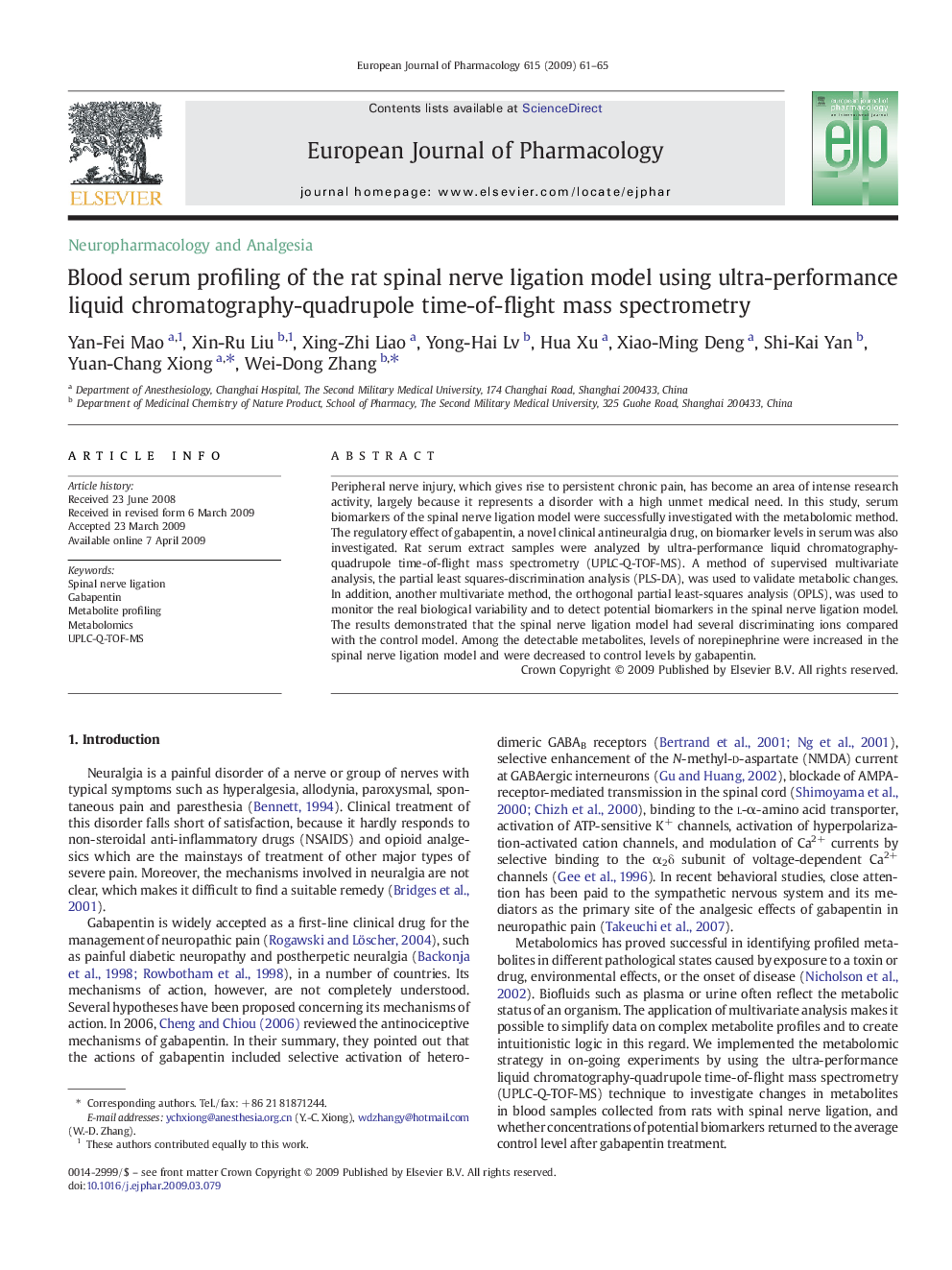| Article ID | Journal | Published Year | Pages | File Type |
|---|---|---|---|---|
| 2534205 | European Journal of Pharmacology | 2009 | 5 Pages |
Peripheral nerve injury, which gives rise to persistent chronic pain, has become an area of intense research activity, largely because it represents a disorder with a high unmet medical need. In this study, serum biomarkers of the spinal nerve ligation model were successfully investigated with the metabolomic method. The regulatory effect of gabapentin, a novel clinical antineuralgia drug, on biomarker levels in serum was also investigated. Rat serum extract samples were analyzed by ultra-performance liquid chromatography-quadrupole time-of-flight mass spectrometry (UPLC-Q-TOF-MS). A method of supervised multivariate analysis, the partial least squares-discrimination analysis (PLS-DA), was used to validate metabolic changes. In addition, another multivariate method, the orthogonal partial least-squares analysis (OPLS), was used to monitor the real biological variability and to detect potential biomarkers in the spinal nerve ligation model. The results demonstrated that the spinal nerve ligation model had several discriminating ions compared with the control model. Among the detectable metabolites, levels of norepinephrine were increased in the spinal nerve ligation model and were decreased to control levels by gabapentin.
